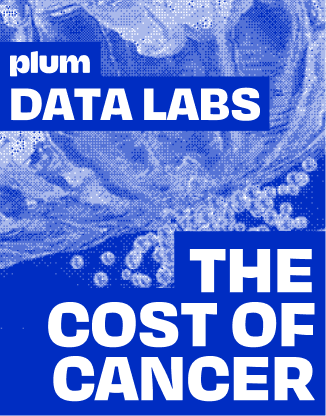Introduction to E-Claims in Group Health Insurance
In the ever-evolving landscape of healthcare, the shift towards digitization has significantly impacted the way insurance claims are processed. Electronic claims, or E-Claims, have emerged as a streamlined and efficient method, revolutionizing the group health insurance sector. This blog will guide you through the intricacies of the E-Claim process, outlining its definition, advantages, step-by-step procedures, the role of third-party administrators (TPAs), and the impact of technology on group health insurance claims.
Definition of E-Claims
E-Claims refer to the electronic submission of health insurance claims through a digital platform. Unlike traditional methods that involve paper documentation, E-Claims streamline the process by allowing policyholders to submit, track, and manage claims online.The digital nature of E-Claims enables real-time tracking, allowing policyholders to monitor the progress of their claims instantaneously. This transparency not only empowers individuals with greater control over their insurance affairs but also contributes to an overall more responsive and client-centric insurance experience. E-Claims epitomize the evolution of health insurance administration into the digital era. By embracing electronic submission and leveraging online platforms, this innovation brings efficiency, convenience, and heightened control to the forefront of the insurance claims process, marking a significant leap forward in the contemporary landscape of healthcare financial management.
{{group-insurance-quote="/web-library/components"}}
Advantages of E-Claims Over Traditional Methods
The adoption of E-Claims brings numerous advantages, such as faster processing, reduced paperwork, and increased accuracy. Additionally, it provides policyholders with real-time tracking, enhancing transparency and efficiency in the claim settlement process.
The transition from traditional paper-based methods to Electronic Claims (E-Claims) represents a pivotal shift in the landscape of health insurance administration, offering a myriad of advantages as follows:
Speedy Processing:
The foremost advantage of E-Claims lies in the expeditious processing of insurance claims. Unlike the often time-consuming procedures associated with traditional methods, E-Claims leverage the efficiency of digital platforms to accelerate the entire claims settlement process. This results in quicker assessments, approvals, and subsequent payouts, providing policyholders with a more rapid resolution to their healthcare-related financial needs.
Reduced Paperwork:
E-Claims eliminate the need for voluminous paperwork traditionally associated with insurance claims. Policyholders no longer have to navigate through stacks of documents or rely on physical submission methods. The digitalization of the claims process streamlines documentation, making it more accessible and easily manageable. This not only contributes to environmental sustainability by reducing paper consumption but also minimizes the risk of errors associated with manual paperwork.
Enhanced Accuracy:
The precision of E-Claims is a notable improvement over traditional methods. By virtue of being digital, these claims systems employ advanced technologies to validate and cross-check information, reducing the likelihood of errors or discrepancies. This heightened accuracy ensures that the claims assessment is based on precise and reliable data, leading to fair and justified outcomes for policyholders.
Real-Time Tracking:
One of the transformative features of E-Claims is the introduction of real-time tracking capabilities. Policyholders gain unprecedented visibility into the status of their claims, allowing them to monitor progress at any stage of the process.
Enhanced Transparency and Efficiency:
E-Claims significantly enhance overall transparency in the claim settlement process. The digital platforms provide a centralized and accessible repository for all relevant information, making it easier for both policyholders and insurers to track and manage claims efficiently.
The E-Claim Process: A Step-by-Step Guide
Initiating an E-Claim: To initiate an E-Claim, policyholders must access the insurer's online portal or mobile application. Here, they can start the claim process by providing essential information such as personal details, policy number, and a brief description of the incurred medical expenses.
Required Documentation for Filing an E-Claim: Accurate documentation is crucial for a successful E-Claim. Policyholders need to upload electronic copies of bills, medical reports, and any other relevant documents. This ensures a comprehensive assessment by the insurer.
Registration and Verification in the E-Claim System
Creating an Account for E-Claims: Before filing an E-Claim, policyholders must register on the insurer's portal. This involves creating a secure account, safeguarding personal information, and providing necessary details to facilitate future claims.
Verification of Policy and Coverage Details: To ensure the validity of the claim, insurers conduct a thorough verification of the policy and coverage details. This step is crucial in preventing fraudulent claims and maintaining the integrity of the insurance system.
Submitting and Tracking Your E-Claim
Uploading Necessary Documents Electronically: Once registered, policyholders can upload required documents electronically. This digital submission expedites the review process, allowing for a quicker assessment of the claim.
Real-Time Tracking of Claim Status: One of the key advantages of E-Claims is the ability to track the status of a claim in real-time. Policyholders can monitor the progress of their claims, receiving timely updates and notifications through the insurer's online platform.
{{group-insurance-quote="/web-library/components"}}
The Role of Third-Party Administrators (TPAs) in E-Claims
TPAs Facilitate the E-Claim Process: TPAs play a crucial role in facilitating a seamless E-Claim process. They act as intermediaries between policyholders and insurers, managing documentation, communication, and ensuring a smooth transaction.
Communication Between TPAs and Policyholders: Effective communication between TPAs and policyholders is essential. TPAs provide clarity on claim requirements, assist in resolving issues, and serve as a bridge to streamline the overall E-Claim experience.
Assessing and Approving E-Claims
The Assessment Process by Insurers: Insurers carefully assess E-Claims to determine their validity and compliance with policy terms. This involves a detailed examination of medical records, bills, and supporting documents.
Criteria for Approval or Denial of E-Claims: Approval or denial of E-Claims depends on various factors, including policy coverage, authenticity of documents, and adherence to pre-defined criteria. Understanding these criteria is crucial for policyholders seeking a successful claim settlement.
Payouts and Settlements in E-Claims
Understanding the Payout Process: Upon approval, the payout process is initiated. E-Claims offer a more expedited payout mechanism, with funds transferred directly to the policyholder's bank account.
Time Frames for Receiving Benefits: Policyholders should be aware of the expected time frames for receiving claim benefits. E-Claims typically reduce processing times, ensuring quicker access to financial support during medical emergencies.
Common Issues and Resolutions During the E-Claim Process
Troubleshooting Common E-Claim Problems: Despite the efficiency of E-Claims, issues may arise. Common problems include document discrepancies, technical glitches, or misunderstandings. This section provides tips and solutions to troubleshoot these issues and ensure a smooth claim process.
Tips for a Smooth E-Claim Experience: To enhance the E-Claim experience, policyholders can follow practical tips, including regular updates on policy information, maintaining accurate records, and promptly addressing any discrepancies.
The Impact of Technology on Group Health Insurance Claims
Technological Advancements in E-Claims: Technological advancements continue to shape the landscape of group health insurance claims. This section explores innovations such as artificial intelligence, blockchain, and data analytics, and their impact on improving the accuracy and efficiency of E-Claims.
Future Trends in E-Claim Processing: As technology evolves, so does the future of E-Claim processing. Anticipated trends include further automation, enhanced data security measures, and the integration of telemedicine into the claims ecosystem.
Best Practices for Employers and Employees
Educating Staff on the E-Claim Process: Employers play a vital role in promoting awareness and understanding of the E-Claim process among their employees. This involves conducting training sessions, providing informational materials, and fostering a culture of digital literacy.
Maintaining Records for Hassle-Free Claims: Both employers and employees benefit from maintaining organized records. This practice ensures easy retrieval of information during the claim process and contributes to a smoother overall experience.
{{group-insurance-quote="/web-library/components"}}
Conclusion
Embracing the Efficiency of E-Claims in Group Health Insurance
In conclusion, the E-Claim process in group health insurance represents a significant leap towards efficiency, transparency, and convenience. By understanding the intricacies of E-Claims and embracing technological advancements, both policyholders and insurers can contribute to a more seamless and responsive healthcare ecosystem. As the digital era continues to unfold, the evolution of E-Claims promises a future where the insurance process is not only efficient but also more attuned to the needs of individuals and organizations alike.
Frequently Asked Questions on Navigating the E-Claim Process in Group Health Insurance
Q. What is the main advantage of filing an E-Claim in group health insurance over traditional paper-based methods?
A. E-Claims offer the advantage of faster processing times, reduced paperwork, and real-time tracking, providing policyholders with a more efficient and transparent experience compared to traditional methods.
Q. Can I submit all necessary documents for my E-Claim electronically, or are there any paper requirements in the process?
A. In most cases, E-Claims require the submission of all necessary documents electronically. Policyholders are encouraged to upload digital copies of bills, medical reports, and other relevant documentation through the insurer's online portal.
Q. How does the involvement of Third-Party Administrators (TPAs) impact the E-Claim process, and what role do they play in facilitating the settlement?
A. TPAs act as intermediaries between policyholders and insurers, managing documentation, communication, and ensuring a smooth transaction. They play a vital role in facilitating the E-Claim process by assisting with claim requirements and addressing issues that may arise.
Q. Is there a specific time frame for receiving benefits after the approval of an E-Claim, and how does it differ from traditional claim processing times?
A. E-Claims generally have shorter processing times compared to traditional methods. Once an E-Claim is approved, the payout process is initiated, and policyholders can expect to receive their benefits within a specified time frame, often quicker than traditional claim settlements.
Q. How can employers best educate their staff on the E-Claim process to ensure a smooth experience for employees when filing claims?
A. Employers can promote awareness and understanding by organizing training sessions, providing informational materials, and fostering a culture of digital literacy. Ensuring that employees are well-informed about the E-Claim process contributes to a smoother overall experience for everyone involved.
.avif)










.avif)














